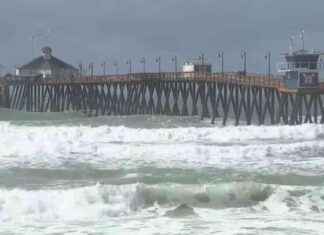“If I am writing to you today, it is to beg you to help me from afar.” This is how a 23-year-old German university student, “of Israeli origin”, expressed himself to an Italian friend. He had been locked up in the Miranda del Ebro concentration camp, like so many other Jews who crossed the Pyrenees to escape Nazism.
The letter is signed by Werner Barasch, on January 17, 1942, urging his acquaintance to call the attention of Pius XII to ask for help. He could take a boat from Lisbon to join her mother in the US, but the intervention of “an outside person” was demanded so that the authorities would allow her release. He wanted the pope to mediate through the nuncio in Madrid. “Others with this intervention from Rome have been able to leave the concentration camp.”
Barasch’s letter is one of nearly 2,700 requests for help from Jewish families and groups, many of them baptized Catholic, that Pope Francis has ordered posted online as part of 170 volumes in the archives of Pius XII’s pontificate. , recently opened, and which will contribute to the debate on the controversial role of Eugenio Pacelli during the Second World War.
The Vatican has always defended that Pius XII did everything in his power in a difficult situation to discreetly save lives, but a part of the Jewish community criticizes his silence in the face of the Holocaust. The new documents, some 40,000 digital files, testify how “between the corridors of the institution at the service of the Pontiff, they worked nonstop to help the Jews in a concrete way,” said the Secretary for Relations with States, Paul Richard Gallagher. Foreign Minister of the Holy See.
This is the documentary series “Ebrei” (Jews, in Italian), which unites all these requests for help from the pope from 1939 to 1948, and which are now available on the website of the Vatican Archive, the former Vatican Secret Archive. This, according to Gallagher, will allow descendants to “search for the traces of their loved ones from all over the world.”
The Internet also makes it possible to find out what happened to Werner Barasch. The Vatican Secretariat of State took care of it in a few days, as can be seen in two letters below, but later its fascicle was interrupted. In most cases, the success of the interventions was not recorded. But a search on the web reveals not only that Barasch wrote his own memoirs as a survivor, but also gave a long interview to the US Holocaust Memorial Museum. In it he says that he was released from the Miranda camp and managed to meet with his mother and sister in 1945. He then studied at Berkeley, MIT, and the University of Colorado, and worked as a chemist in California.
As Gallagher tells it, the then Secretary of State assigned a diplomat, Angelo Dell’Acqua, to deal with these requests for help that came from all over Europe with the aim of “providing as much help as possible”. They demanded visas, passports to be expatriates, shelter, family reunifications, releases from detention, transfers from one concentration camp to another, news about a deported person, supplies of food or clothing, or financial or spiritual support, among other things.
Francis’ passage follows the decision, in March 2020, to open the archives relating to Eugenio Pacelli to academics, who can enter the Holy See to study more than sixteen million meticulously arranged pages over almost fourteen years, and try to clear up accusations that Pius XII was too passive towards Hitler. He was especially criticized for the raid that took place in the Rome ghetto in October 1943, when more than a thousand people were transferred to a military college a stone’s throw from the Vatican, and later deported to Auschwitz. Only sixteen people returned, without Pacelli raising his voice.








